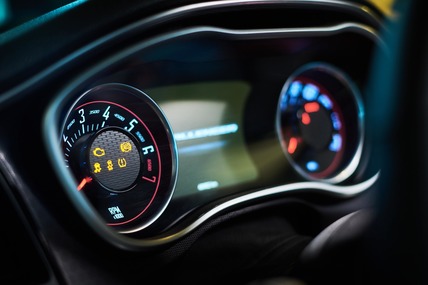INDEPENDENT DEALER
Idaho Falls, ID | (208) 524-0322
OUR BLOG
Confused by dashboard alerts? We’ve got the most common car warning lights explained so you can drive smarter and safer. This post from Schell Distributing Inc. in Idaho Falls, ID, has the answers!

That glowing symbol on your dash isn’t just decoration—it’s a direct alert about your car’s health. Some are just reminders ("Hey, your parking brake’s on"), while others are serious ("Pull over NOW before your engine explodes").
Let’s dive into the world of dashboards with common car warning lights explained in simple terms. No jargon, no scare tactics—just straight-up helpful info.
Time for an oil change? Call Schell Distributing Inc. in Idaho Falls, ID, at (208) 524-0322 for expert advice, and visit AMSOIL’s online store to stock up on premium synthetic oil and essentials.
1. The Brake Warning Light
What You’ll See
A red circle with an exclamation point inside—sometimes with the word "BRAKE" or parentheses around it.
What It’s Telling You
This one’s serious. It could mean:
- Your parking brake is still on (oops—we’ve all done it).
- Your brake fluid is low.
- Your brake pads are worn down.
- There’s a bigger issue with your braking system.
What You Should Do
- Check the parking brake: If it’s engaged, release it and see if the light turns off.
- Look at your brake fluid: If it’s low, top it off with the right type (check your manual).
- Listen for weird noises: Grinding or squealing? Your brake pads might be toast.
- If the light stays on: Get to a mechanic ASAP. Brakes aren’t something you want to gamble with.
2. The Engine Temperature Light
What You’ll See
A little red thermometer floating in what looks like waves.
What It’s Telling You
Your engine is running too hot, and that’s bad news. Possible reasons:
- Low coolant (a.k.a. antifreeze).
- A leak in the cooling system.
- A broken water pump, thermostat, or radiator fan.
What You Should Do
- Pull over and shut off the engine: Driving while overheating can fry your engine.
- Let it cool down: Seriously, don’t open the radiator cap while it’s hot. Steam burns are no joke.
- Check the coolant level: If it’s low, add more (when the engine is cool).
- If it keeps overheating: Call a tow truck. Trying to drive it could cost you an engine.
3. The Oil Pressure Light
What You’ll See
This looks like a red oil can—sometimes with a drip at the end.
What It’s Telling You
Your engine isn’t getting enough oil, which is like running a marathon without water. Causes:
- Low oil level (maybe it’s time for an oil change).
- A leak somewhere.
- A failing oil pump (less common, but serious).
What You Should Do
- Stop driving immediately: Running with low oil pressure can destroy your engine in minutes.
- Check the oil level: If it’s low, add the right kind (your manual will tell you which).
- Look for leaks: If you see oil under the car, don’t drive it.
- If the light stays on after adding oil: Get it checked out. Better safe than sorry.
Power, protection, and performance—AMSOIL Signature Series 5W-50 has it all. Call (208) 524-0322 to order from Schell Distributing Inc. in Idaho Falls, or shop AMSOIL online 24/7 for everything your car needs.
4. The Battery Light
What You’ll See
A red battery icon, sometimes with a "+" and "-" on it.
What It’s Telling You
Your car’s electrical system isn’t charging properly. This could mean:
- The battery is dying.
- The alternator (which charges the battery) is failing.
- There’s corrosion or a loose connection at the battery terminals.
What You Should Do
- Turn off unnecessary electronics: AC, radio, heated seats—anything that drains power.
- Check the battery connections: If they’re loose or corroded, clean and tighten them.
- If the light stays on while driving: Your alternator might be the culprit.
- If your car dies: You might need a jump-start, but get the battery or alternator tested soon.
5. Lastly, the Check Engine Light
What You’ll See
An orange/yellow engine symbol—sometimes with "CHECK ENGINE" written under it.
What It’s Telling You
This one’s tricky because it can mean so many things, from minor to major:
- A loose gas cap (the easiest fix).
- A bad oxygen sensor.
- Spark plug or ignition issues.
- Catalytic converter trouble (expensive if ignored).
What You Should Do
- Check the gas cap: If it’s loose, tighten it and see if the light goes off after a few drives.
- Get the code read: Most auto parts stores will scan it for free.
- Pay attention to how it behaves:
- Solid light? Schedule a check-up soon.
- Flashing light? Pull over and call a tow truck—this means serious engine trouble.
- If you’re not sure: A mechanic can diagnose it properly.